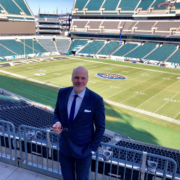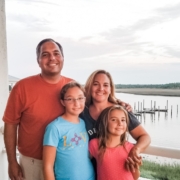With CTE, correlation does not equal causation
This weekend marks the 58th annual championship for America’s pre-eminent professional football association—a contest that many refer to as the “Big Game.”
As festivities unfold in and around Las Vegas, it’s likely some of the pre- and post-game conversation will focus on a hot-button issue: the subject of Chronic Traumatic Encephalopathy (CTE), which has become associated with concussions and traumatic brain injuries (TBIs).
The U.S. media has reported that repeated concussions and other TBIs like those suffered in contact sports play a critical factor in developing CTE. This is merely one interpretation of the truth. Extensive reviews of past and current data on the subject suggest some degree of correlation between brain injuries and CTE but do not provide conclusive evidence of causation.
In short, reports of the connection between concussions and CTE may be greatly exaggerated.
Yes, repeated brain injuries can cause damage to one’s brain. Yes, many of those people who have been diagnosed with CTE pathology posthumously experienced repeated brain injuries when they were alive. But other things can cause CTE pathology, too. And the scientific community doesn’t know enough about CTE pathology to understand what else might cause it, or what other factors may put someone more at risk.
According to Dr. C. Munro Cullum, vice chair and chief of the Division of Psychology in the Department of Psychiatry at the University of Texas Southwestern Medical Center, pronouncing some sort of causation between concussions and CTE is “putting the cart before the horse” at this point.
“Headlines are grabbing attention and [stories are being] presented as fact, but they’re sometimes based on little evidence and more on theory and hypotheses,” said Dr. Cullum, who is a past president of the National Academy of Neuropsychology (NAN), and a past president of the Sports Neuropsychology Society (SNS) as well.
“I’m concerned that much of the public has this perception that CTE is this widespread brain condition that’s going to affect all their kids and everybody that plays sports or ever hits their head on anything, and most of us in the field don’t believe that’s the case.”
– C. Munro Cullum, Ph.D.
How did we get here?
Before any lengthy discussion about the correlation between concussions and CTE, it’s important to define some terms.
First off: What is a concussion?
Dr. Donna Broshek, the John Edward Fowler Professor of Psychology at the University of Virginia School of Medicine, a NAN Fellow, and executive director of the SNS, describes it as a “temporary disruption of brain function,” usually due to some sort of impact. Clinical signs include an acute alteration of one’s mental status, physical symptoms, cognitive symptoms, and emotional symptoms.
The current International Consensus Statement on Concussion in Sport is based on evidence-based methodology from the sixth International Conference on Concussion in Sport, held in Amsterdam in October 2022 and published in the British Journal of Sports Medicine. The consensus definition of sport-related concussion includes an injury that 1) is caused by transfer of mechanical energy to the brain from external forces to the head, neck, or body, 2) triggers the rapid onset of symptoms that may occur immediately or develop over minutes to hours, and 3) leads to symptoms that typically resolve within days but may last longer in some individuals.
The U.S. Centers for Disease Control and Prevention (CDC) estimates there are about 4 million concussions per year. Dr. Broshek and other neuropsychologists believe that number is a gross underestimate, that many go undiagnosed or unreported.
While football gets most of the attention regarding concussions and TBIs, the top 20 activities associated with mild or even acute TBIs include bicycling, soccer, skateboarding, horseback riding, gymnastics, cheerleading, and more. People also can get concussions or TBIs from car accidents, from serving in the military near blast zones, or even from slipping and falling on a patch of ice.
“The truth is that it can happen to anybody at almost any time,” said Dr. Cullum. “It’s definitely not just football or contact sports.”
(For a comprehensive look at later-in-life health risks associated with concussions or repetitive head impacts, this article and the online supplement that accompanies it are both worth the read.)
Next, of course, we must define CTE pathology.
The same consensus statement from the 2022 International Conference on Concussion in Sport comprises six paragraphs that pertain directly to CTE and clearly define what CTE is and is not. The last two of these paragraphs make a point of separating the pathology and the clinical condition, which researchers now call Traumatic Encephalopathy Syndrome (TES).
Technically speaking, CTE pathology is characterized by an abnormal deposition of tau protein in clusters or lesions around small blood vessels of the cerebral cortex.
In the olden days—nearly 100 years ago—it was conceptualized as a consequence of boxing, and people called the condition dementia pugilistica, or “punch drunk syndrome.” Even then, however, scientists were careful not to infer a direct link.
Like many neurodegenerative diseases, CTE is diagnosed with certainty only by neuropathological examination of brain tissue—something that typically can’t happen unless the patient is dead. Yes, you read that right: At this time, the only way someone can be definitively diagnosed with CTE pathology is posthumously. Which means health care providers currently have no way to tell if there is CTE present in a living person.
Some reports have hypothesized a relationship between CTE pathology and abnormal cognition and behavior. It’s worth nothing that these symptoms are consistent with other clinical conditions, forms of cognitive decline, and/or other mental health challenges.
Jumping to conclusions
Now that we’ve expounded on these terms a bit, we can begin to unpack the connection between concussions and CTE pathology—or the lack thereof.
In recent years, media coverage of high-profile cases like the case of former pro-footballer-turned-murderer Aaron Hernandez has triggered associations between repetitive brain injuries and pathologies consistent with CTE.
These associations were oversimplified. For starters, not everyone who gets a concussion or sustains repetitive hits to the head ends up being diagnosed posthumously with CTE pathology; for instance, there are many retired athletes who had lots of exposure to brain injuries over time who don’t seem to have any cognitive issues at all, and, at this time, there’s no way to predict it. At the same time, while CTE pathology is found more frequently in individuals who had a history of repetitive head hits, there is no clear evidence that repetitive head hits are a direct cause of the pathology.
In fact, despite this GQ story, a July 2023 study by Dr. Grant Iverson and others suggests that CTE pathology is uncommon in men that played amateur football in their younger years.
“This caught a lot of media attention when some former [pro football] players died by suicide, their brains were examined, and they had CTE,” Dr. Cullum said. “Some people were quick to make an assumption that their involvement in [pro football] had a direct effect on this outcome. That’s a bit of a leap until other factors are examined.”
So what are these other factors?
Scientists don’t know what if any genetic factors may be playing a role—they suspect genes are a part of the story but still have lots of questions to answer. Researchers are curious to learn more about the impact of a genetic predisposition to CTE pathology as well as other factors such as cardiovascular disease, diabetes, high body mass index, and more. Gender might play a role—Dr. Nyaz Didhebani, a neuropsychologist at UT Southwestern Medical Center, is studying the intersection of women and CTE, and recently participated in a podcast on the subject. Environmental and behavioral factors also could play a role. Dr. Broshek said there are “numerous” other factors that could contribute to neurocognitive decline in someone who happened to have a concussion or two in their past. (This article does a good job of summarizing some of these other factors.)
“I suspect there are some people where maybe there’s some cumulative cognitive burden over time from repetitive injury, but it may not ever end up looking like what is presented as CTE [pathology],” she said. “It may just be like a little bit of cognitive change that’s maybe a little bit more than you would expect for just age-related changes.”
This article proves that sometimes even the most seemingly obvious symptoms of TES in people with history of repeated TBIs aren’t necessarily CTE. Then there are the outliers: CTE has been reported in some individuals without a known history of repetitive head hits, and scientists have no idea what’s causing the pathology there.
Dr. Cullum noted that in some autopsy cases, researchers see a very high rate of coexisting neuropathology, meaning many people who are diagnosed with CTE posthumously also have pathology for other dementias. Dr. Cullum co-authored a study about this in 2021.
“When then one tries to walk backwards from that pathology to making assumptions about behaviors earlier during life, things get a little bit murky,” he said. “For example, why would this CTE pathology be related to the memory problem and not the Alzheimer’s pathology? We have to be very, very careful and cautious as scientists to acknowledge what we don’t yet know.”
Dr. Christian LoBue was Dr. Cullum’s co-author on that 2021 study. Dr. LoBue is a clinical neuropsychologist and assistant professor in the Department of Psychiatry at UT Southwestern, and he said that when patients are exhibiting symptoms that might be seen as relating to TES, intersectionality between pathologies can be especially problematic.
“When we have these vague descriptions of individuals who have been identified as having a pathology and their family members complete these interviews asking how they were doing over time and there are indications of there being some issues with memory and anxieties, some depression, all these other things that could be going on, it really becomes complicated,” he said. “We have to ask ourselves, ‘How much is due to an underlying brain pathology, and how much is due to a treatable condition?’ There’s no way to really know from those vague descriptions.”
Where we need to go?
What’s the future of CTE research? That depends on whom you ask.
Dr. Ann McKee and other researchers working with the UNITE Brain Bank at Boston University continue to study post-mortem brains to learn more about aspects of CTE pathology. Researchers such as Dr. Cullum and Dr. LoBue (and many others) currently are approaching the condition from a different perspective, attempting to determine if there is a correlation between repeated brain injury and neurodegenerative conditions, and investigating some of the factors that may contribute to a person’s likelihood to develop CTE pathology in the first place.
Again, the Brain Bank studies to date have revealed a correlation between CTE pathology and repeated brain injury, but no direct causation.
Dr. Cullum and Dr. LoBue said their research has yet to reveal a specific neuropsychological pattern for CTE, as well.
Curiously, he said, when one looks at existing databases that have CTE data and one examines the neuropsychological scores, patients with CTE pathology look just like patients with other neurological conditions. This article spotlights that phenomenon.
“We still have a ways to go in terms of our clinical versus pathological associations,” he said. “Because we can’t diagnose CTE in a living person, if an impairment looks more like a different profile, treatment of the patient will follow along those lines because we don’t know enough about CTE and because many behavioral symptoms are treatable.”
Dr. Broshek said it also will be important for researchers to figure out if there are individual factors that predispose certain people to a more significant cognitive outcome. Here, she speaks of finding biomarkers that might help predict whether a person—say, an athlete, or a soldier in the U.S. Army—will know they have a greater risk of cognitive compromise if they are exposed to repeated brain injuries over time.
Perhaps with this information, she said, people could make informed decisions about their futures.
As research continues, journalists (ourselves included here at BrainWise) and other messengers must work to temper the perception of the connection between concussions and TBIs and CTE pathology.
According to Dr. Broshek, sensationalism often leads to misinformation, which can lead to unfortunate outcomes. She recollected that over the years there have been a few tragic cases where professional athletes were convinced that they had CTE, and did not seek evaluation and/or treatment. The danger of misinformation is that treatable conditions go untreated, and athletes, former athletes, and their families suffer.
Research shows misconceptions are widespread, and a 2018 survey conducted by the CDC proved this point explicitly. The CDC surveyed 674 parents of children who played in youth sports programs and asked these parents about the perceived risk of their kids getting concussions that could trigger larger cognitive challenges. Shockingly, about a quarter thought that their child would develop CTE or dementia from having just a single concussion. The parents also thought their kids would develop these problems early in life, too—a reality evidence simply doesn’t support.
In some cases, misconceptions are even more insidious. At the NAN Conference in October 2023, Executive Director Dr. William Perry shared a story about the mother of a 4-year-old child who fell off a chair at home. Dr. Perry, who is a past president of NAN and Professor of Psychiatry at the University of California San Diego, described the mother as “distraught” over the incident. In particular, she was worried her child was now at risk of developing CTE.
Obviously, this is a serious problem. All kids fall. Sometimes they hit their heads. Think about how many children around the world who play sports, get head injuries, and do NOT display symptoms of CTE pathology. Just because some people who have been posthumously diagnosed as having CTE pathology experienced concussions and/or repeated TBIs during life doesn’t mean everyone who bumps their head more than once or twice may be at risk of a similar diagnosis.
Dr. Cullum insisted scientists share some of the burden to set the record straight. He said they must make sure the correct messages are being shared with the masses.
“If a reporter calls me and I describe a study where we found no difference between people with CTE and Alzheimer’s and their neuropsychological profiles, that doesn’t tend to make a headline,” he said. “They want to hear something that’s going to be splashy and get people’s attention. We need [members of the general public] to read beyond the headline. It’s like I teach my graduate students: Don’t just read the abstract of the paper, read the paper. Science is collaborative and competitive. Nobody has all the answers about [CTE] yet. It’s okay to present several perspectives, then take a step back and look objectively at what’s really out there and say, ‘We need to do more research and publish more papers before we know what’s really going on here.’”
In other words, until science can determine causation, correlation cannot be assumed to be causative.
This article has been factchecked. For more about that process, click here.









